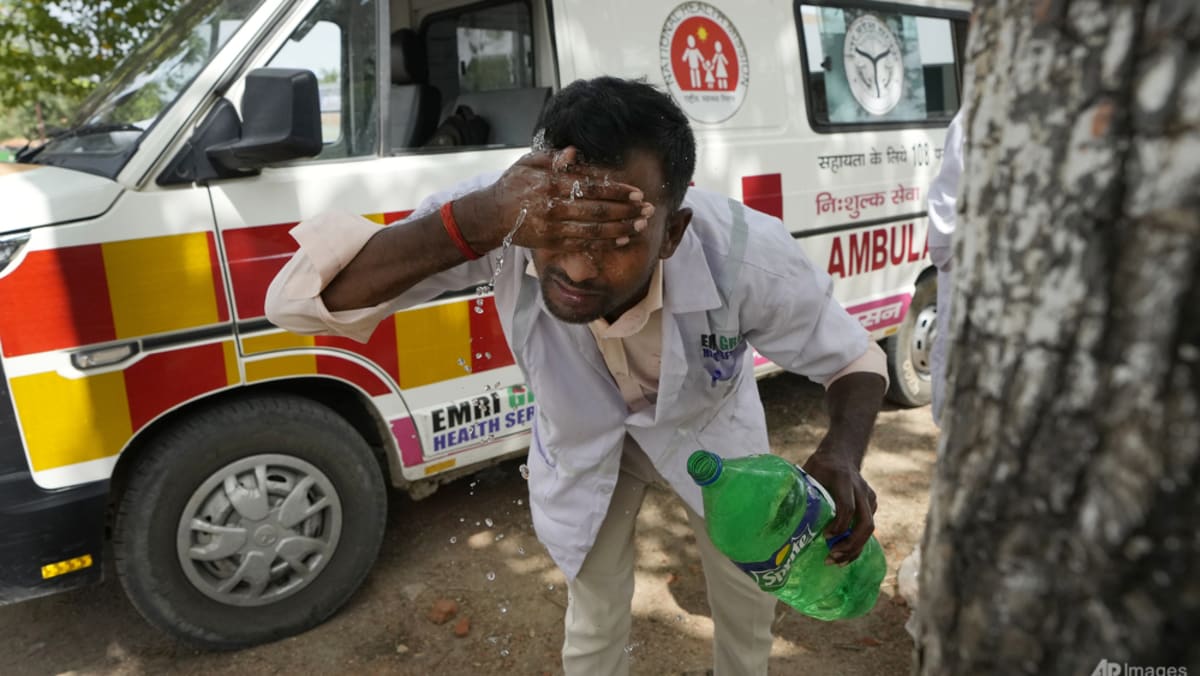
BANPUR, India: Siren blaring, Sunil Kumar Naik’s ambulance tore across a dry and rocky countryside blasted by dangerous midday heat, rushing to check on a vomiting and dizzy 30-year-old man with possible heat stroke. As soon as they reached the man’s village, Naik’s paramedic partner guided the stricken man into the ambulance, then checked his pulse and oxygen levels as Naik sped back to the public hospital.
With barely a moment to drink some water and splash their faces, the men were dispatched again, this time to pick up a pregnant woman who had gone into labour as the temperature soared to 43 degrees Celsius. And so went another furious 12-hour shift in India’s increasingly deadly summer, when Naik and paramedic Jitendra Kumar sometimes find themselves hurrying to as many as twice the usual number of calls.
Extreme heat is fast becoming a public health crisis in India, with more than 150 people dying during the latest brutal heat wave in June. Prolonged heat waves, sometimes classified as a slow-onset disaster, are one of the deadliest consequences of global warming that India faces. The government estimates nearly 11,000 people have died during heat waves this century, yet experts say such figures are likely a vast undercount.
Banpur, a village of about 13,000, lies in the mostly poor Bundelkhand region deep in India’s interior. It is arid and stony, with little tree cover to protect people in one of the nation’s hottest regions. Naik and Kumar make up one of two ambulance crews that cover the village and surrounding area, carrying patients to the government-run public health centre. The state and federal governments help fund the not-for-profit ambulance service, making it a free lifeline for patients.
“I consider every patient my family member. I don’t care if it is hot or if I am hungry, I go on a mission to get the patient out and transport them to the hospital,” said Naik, whose only protection from the heat and dry, hot winds is a white cotton towel wrapped around his head. “It is difficult for me driving the vehicle in extreme heat, but it is nothing compared to the hardships of a patient in a medical emergency.”
